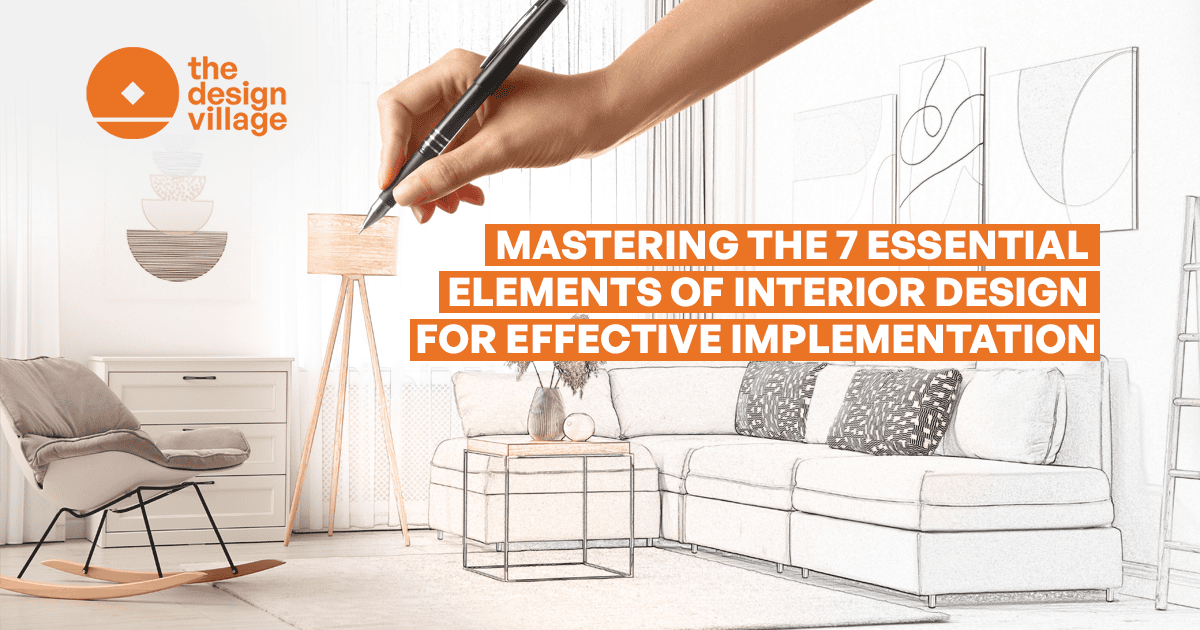In the realm of interior design, mastering the seven essential elements is the key to creating spaces that are not only aesthetically pleasing but also functional and harmonious. From color and texture to space planning and lighting, each element plays a crucial role in shaping the ambiance and functionality of a space. We delve into the intricacies of these elements and explore techniques for their effective application, offering invaluable insights for aspiring designers and enthusiasts alike. For those seeking formal education in this field, Bachelor of Design Institutes in Delhi NCR provide comprehensive programs that equip students with the knowledge and skills needed to excel in the dynamic world of interior design.
Color:
Color is perhaps the most powerful tool in an interior designer’s arsenal, capable of evoking emotions, influencing moods, and defining the character of a space. Understanding color theory, including the psychology of color and its impact on spatial perception, is fundamental to effective design. By experimenting with hues, tones, and shades, designers can create dynamic compositions that resonate with the occupants’ preferences and lifestyle.
Texture:
Texture adds depth, dimension, and tactile appeal to interior spaces, enriching the sensory experience and imbuing them with warmth and character. From smooth surfaces to rough finishes, incorporating a diverse range of textures can create visual interest and evoke a sense of comfort and coziness. Balancing different textures within a space enhances visual contrast and fosters a harmonious ambiance, elevating the overall design aesthetic.
Space Planning:
Space planning is the art of optimizing the functional layout and circulation within a space to maximize efficiency and usability. By carefully considering factors such as traffic flow, furniture arrangement, and spatial proportions, designers can create layouts that are both practical and visually pleasing. Effective space planning ensures that every inch of space is utilized effectively, promoting comfort, convenience, and ease of movement. Students pursuing a BDes Interior Design learn the intricacies of space planning, gaining the skills needed to create well-organized and harmonious environments.
Lighting:
Lighting is an essential element that can dramatically transform the look and feel of a space, enhancing its ambiance and functionality. Proper lighting design involves a strategic blend of natural and artificial light sources to create layers of illumination that cater to different tasks, moods, and activities. From ambient lighting to task lighting and accent lighting, each type serves a specific purpose in illuminating spaces and highlighting architectural features.
Form:
Form refers to the shape and structure of objects within a space, including furniture, fixtures, and architectural elements. Understanding the principles of form, such as scale, proportion, and balance, is crucial for creating visually appealing compositions that resonate with the overall design concept. By manipulating form through careful selection and arrangement of elements, designers can evoke specific emotions and create focal points that command attention. An Interior Designing Course in Delhi NCR provides students with a thorough understanding of these principles, equipping them with the skills necessary to create impactful and aesthetically pleasing designs.
Pattern:
Pattern adds visual interest, rhythm, and personality to interior spaces, infusing them with energy and vibrancy. Whether through textiles, wallpapers, or decorative accents, incorporating patterns allows designers to express creativity and introduce thematic motifs that reflect the occupants’ style preferences. Mixing and layering patterns effectively requires a keen eye for composition and an understanding of scale, ensuring a cohesive and visually engaging design scheme.
Line:
Line serves as a fundamental design element that defines the boundaries, shapes, and flow of a space. Whether through architectural features, furniture silhouettes, or decorative details, lines contribute to the overall visual hierarchy and balance of a design. Understanding the various types of lines, such as vertical, horizontal, and diagonal, enables designers to create dynamic compositions that guide the eye and evoke a sense of movement and rhythm.
Conclusion:
Mastering the seven essential elements of an interior design course is essential for creating spaces that are not only visually stunning but also functional, comfortable, and reflective of the occupants’ lifestyle and personality. By understanding the nuances of color, texture, space planning, lighting, form, pattern, and line, designers can unlock endless possibilities for creative expression and effective design implementation.
For aspiring designers seeking to hone their skills and pursue a career in interior design, enrolling in reputable interior designing colleges in Delhi NCR or Bachelor of Design institutes in the region can provide the necessary education and training to embark on this exciting journey. With a comprehensive interior designing course in Delhi NCR, aspiring designers can gain hands-on experience, industry insights, and practical skills to succeed in this dynamic and rewarding field.
Whether pursuing a BDes in Interior Design or seeking professional certification, investing in quality education and training is paramount for aspiring designers to thrive in the competitive world of interior design. By mastering the fundamental principles and techniques discussed herein, designers can embark on a fulfilling career path and leave a lasting impact through their innovative and transformative designs.




